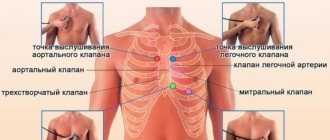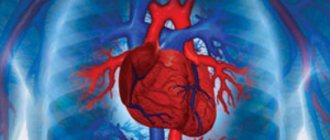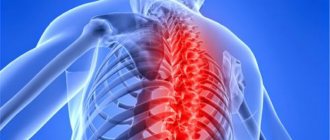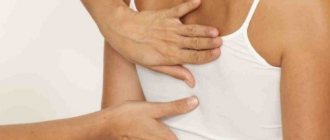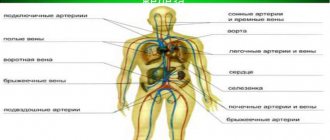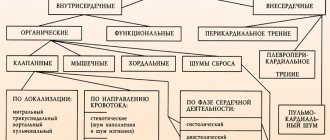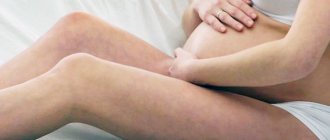Methods for diagnosing and treating cervical osteochondrosis in VSD
Greetings, dear readers!
In the course of many studies and observations, it was found that the cause of the predominant number of cases of development of vegetative-vascular dystonia is osteochondrosis. So, the patient experiences headaches, difficulty breathing, pain in the heart and dizziness.
Based on the fact that VSD and cervicothoracic osteochondrosis are interrelated and have many similar symptoms, diagnosis and treatment are carried out by two doctors - a neurologist and an osteopath.
When treating this type of illness, people ask the following questions:
- What should the treatment be?
- Which methods are more helpful in traditional or traditional medicine?
- What comprehensive measures do doctors recommend?
- Do massage and gymnastics help?
- What should be the prevention?
Let's talk about everything in order today.
Vegetative-vascular dystonia is a pathological condition, the causes of which are disorders of the central nervous system and vegetative nervous system. The main factors in the development of the disease are frequent stressful situations, emotional instability, excessive mental stress and insomnia.
Cervical osteochondrosis can also lead to vegetative-vascular dystonia. As a result of the destruction of intervertebral discs in the cervical region, the distance between the discs themselves narrows. At the same time, their mobility increases and when the body moves, especially the upper part of the body, irritation of nerve fibers and blood vessels occurs. This leads to sudden pain in the neck.
If this stage of the development of the disease is ignored, rupture of ligaments, blood vessels, deformation of the vertebrae and the development of a hernia will soon occur. Further progression of the disease leads to increased pressure on the arteries, disruptions in cerebral circulation, in the cervical and thoracic regions, and disruption of the central nervous system.
Against the background of developing VSD, pain appears in the head and heart area. Let's consider all the possible symptoms of VSD, the cause of which is cervical osteochondrosis.
- heart rhythm disturbance;
- unstable blood pressure;
- change in skin color;
- nausea;
- feeling of heat;
- cold feet and palms;
- visual impairment;
- pain and crunching sounds in the joints;
- dizziness, rarely - fainting.
With VSD, the cause of which is thoracic osteochondrosis, the following symptoms are observed:
- pain in the shoulder blades and chest;
- sudden pain when doing exercises or during work;
- painful colic in the legs or lumbar region.
Painful symptoms in the heart area rarely appear, and after hypothermia the body may experience spasms in the feet and sharp pain in the back.
Manifestations of VSD against the background of cervical osteochondrosis and, as a consequence, pressure on the central nervous system are not only pain, but also a feeling of fear, panic, anxiety and a depressed state of the patient.
When the NS is affected, the following symptoms occur:
- sleep disturbance, insomnia;
- panic attacks;
- apathy, reluctance to do anything;
- chronic fatigue;
- decreased visual acuity, fog before the eyes;
- increased irritability, especially to sounds;
- moral and physical exhaustion due to frequent manifestations of pain;
- sudden emotional surges and mood changes;
- pain when moving the head and neck;
- confusion.
If you notice any of the above symptoms, I would recommend immediately contacting a clinic to diagnose the disease.
Treatment should begin only after a complete examination at a medical center and an accurate diagnosis has been established. To do this, it is important to know who to contact at the very beginning.
The first on the list is a neurologist, and after consultation with him, the necessary procedures are prescribed, including:
- X-ray of the spine and the affected area;
- Magnetic resonance imaging;
- CT scan;
- myelography;
- biochemical and general blood test.
All these examinations are needed to exclude secondary pathologies in the body. Comprehensive diagnostics allows you to understand what measures to take and what to do to alleviate the patient’s well-being, how to treat the disease, taking into account the stage of its development and the individual characteristics of the patient.
Drug treatment of VSD, which arose as a result of cervical osteochondrosis, includes drugs that strengthen blood vessels and improve blood circulation and, in parallel, means to improve the trophism of the cartilage tissue of the intervertebral discs.
Medicines for the treatment of VSD are:
- vitamin complexes based on the B group - more often used as injections. Use B1 and B6;
- vasodilators - Cavinton, Piracetam, Biloba Ginkgo, Vinpocetine.
Treatment of osteochondrosis is carried out using:
- anti-inflammatory non-steroidal drugs - Ketorol, Baralgin. Help relieve pain symptoms and inflammation. Prohibited for pathologies of the gastrointestinal tract or circulatory system;
- chondroprotectors - Teraflex and Alflutop. Restore cartilage tissue. There are tablets and solutions for injections into joints.
If the patient complains of pain and a feeling of a lump in the throat, he is prescribed the drug Glycine, which has a beneficial effect on the nervous system, stabilizes mood, relieves feelings of fear and panic, thereby relaxing the neck muscles and eliminating discomfort in the throat. Other sedatives that may be prescribed include Paroxetine, Fluoxetine, Rispolept.
The drug Osteo Health is a combined healing agent to eliminate the symptoms of osteochondrosis. It has an analgesic effect and activates blood flow in the tissues around the spine. The medicine consists of natural products, which eliminates side effects and allows it to be used in combination with the main treatment.
If osteochondrosis is tormented by constant pain, use Osteo Health, which will help:
- improve metabolic processes in the tissues of the vertebral region;
- restore elasticity in the areas between the discs;
- start the regeneration of bone and cartilage tissue;
- eliminate inflammation;
- numb.
The drug has found many fans among consumers and professionals, is widely used in medical institutions, and is also indicated for therapy at home. It is recommended for use instead of pharmaceutical preparations in other forms of release, since the spray has an easy-to-apply consistency and is quickly absorbed. Suitable for patients of all age groups.
To avoid progression of the disease and prevent disability, it is necessary to treat the disease comprehensively. We are talking not only about the use of special drugs, but also the implementation of therapeutic measures to strengthen the body and the body’s defenses.
The most popular and effective physiotherapeutic procedures against osteochondrosis and VSD include:
- massage with cups;
- magnetic laser therapy;
- hydromassage;
- physiotherapy;
- radon baths;
- electrophoresis;
- Darsonval therapy;
- yoga;
- hot stone massage;
- acupuncture.
These techniques help eliminate foci of inflammation and pain, and are effective in diseases where there is a connection between vegetative-vascular dystonia and osteochondrosis.
Despite the safety of therapy with folk remedies, we still advise you to consult a doctor before using unconventional methods of treatment.
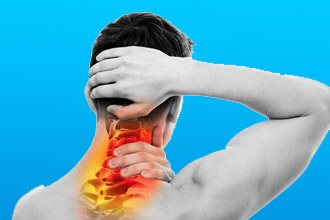
Based on many years of experience, people talk about the effectiveness of the following recipes for the treatment of VSD against the background of osteochondrosis:
- horseradish compress - the leaves of the plant are doused with boiling water, and when they cool down, they are applied to the sore spots and secured with a bandage. They are left overnight. The course of treatment is 2-4 weeks of daily procedures;
- celery decoction - proportions 1 gram of root vegetable per 1 liter of boiling water. Pour over the plant, leave for 6-9 hours, drink a tablespoon before each meal;
- honey compress - you need to rub the skin on the neck, lubricate the heated area with warm honey and apply a bandage. Wear during the day for 5-10 hours or apply a compress at night.
Don't forget that honey can cause allergic reactions with skin redness, itching and burning. Make sure you don't have such negative reactions.
Remember that osteochondrosis and vegetative-vascular dystonia are not a death sentence. Even though these two diseases are diagnosed at the same time, they will not become an obstacle to a normal life.
Just follow all the treatment measures recommended by your doctor, as well as preventive measures, namely:
- avoid stressful situations and do not overstrain your brain with mental activity;
- give up alcohol and tobacco products;
- switch to proper nutrition, eating vegetables, fruits and grains daily;
- walk in the fresh air every day, walks before bed are especially useful;
- do not forget about healthy 8-hour sleep;
- sign up for the pool;
- perform therapeutic exercises every morning;
- engage in active sports;
- do not sit in one place for a long time, do a warm-up for the whole body every half hour.
These procedures stabilize the patient’s condition, eliminate the symptoms of diseases, and help healthy people prevent their development.
conclusions
If you feel a deterioration in your health and notice any of the symptoms given in the article, you do not know how to distinguish cervical osteochondrosis from cervicothoracic osteochondrosis and do not understand what is happening to you, go to the hospital to diagnose the disease and its successful treatment.
Everything will be ok. I want you to successfully complete treatment and not forget about preventive measures in the future, and also suggest reading this article on social networks to your friends. I will be very glad if you subscribe to blog updates. Bye everyone and take care of yourselves!
To improve the patient’s well-being, it is necessary to simultaneously treat VSD and osteochondrosis. Therapy implies:
- conducting physical therapy;
- massage;
- manual therapy;
- taking medications.
Anti-inflammatory drugs, chondroprotectors and analgesics are widely used among medications. Symptomatic treatment of dystonia involves taking sedatives and antioxidants. In addition, you should definitely stop smoking, as nicotine causes vasoconstriction.
For severe panic attacks, tranquilizers and sometimes antidepressants are widely used. You should definitely consult a psychologist or psychotherapist. If blood circulation in the brain tissue deteriorates, drugs are used to restore it.
If VSD and osteochondrosis are interrelated, then it is imperative to improve the condition of the spinal column, however, the patient does not always have the strength and desire to carry out a complex of physical therapy due to the presence of panic attacks.
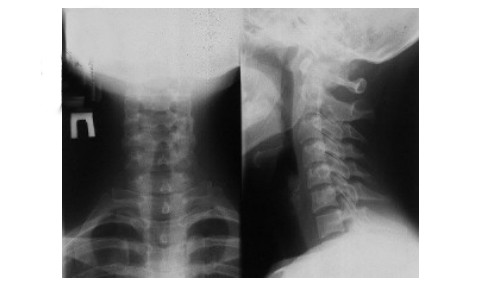
X-ray of the cervical spine
Prevention measures
The most effective method to prevent the onset of nausea is to do physical therapy and gymnastics, swimming, yoga, and walks in the fresh air every day.

Swimming is useful for pathologies of any location.
Including vegetables, fruits, berries, cereal porridges, and fermented milk products (cottage cheese, kefir, low-fat cheeses) in your diet will help improve blood circulation. Neurologists also recommend drinking at least 2 liters of clean water daily to remove waste, toxins, and harmful mineral salts from the body.
Similar articles
Mechanism of disease development
In the pathogenesis of the development of the disease, the presence of two mechanisms is of particular importance: damage to the musculoskeletal system and a violation of the neurohumoral regulation of the body.
Damage to the musculoskeletal system manifests itself in the destruction of the joints of the spine along its entire length.
Namely, what happens:
- development of destructive and degenerative processes in the cartilage tissue of the spinal joints;
- narrowing of the joint space;
- compression of intervertebral discs and their protrusion from the spinal canal (formation of hernias);
- deformation of bone tissue (growth of osteophytes); curvature of the spinal column;
- damage to nerve endings, up to their atrophy and loss of nerve impulses.
The formation of destructive processes in the cervical vertebrae (C5, C6, C7) leads to the occurrence of reflex manifestations that limit the mobility of the cervical spine. Pinching of the spinal cord roots at this level is accompanied by severe pain, shooting in the head and shoulder girdle.
Often, during an exacerbation of cervical osteochondrosis, the patient takes a forced, gentle position, in which he tries to move as little as possible, so as not to cause himself additional pain. Myositis is a frequent “companion” of cervical osteochondrosis. The pain spreads across the shoulder girdle, down to the level of the shoulder blades, limiting movement in the shoulder joints. Palpation of the paravertebral points of the cervical spine is quite painful.
Violation of neurohumoral regulation largely explains the existence of a close connection between the progression of osteochondrosis of the cervical spine and manifestations of vegetative-vascular dystonia.
One of the most common companions of cervical osteochondrosis is VSD. Destruction of the intervertebral discs, compression of the nerves and vessels supplying the brain, atrophy of the muscles of the back and neck lead to the development of VSD in cervical osteochondrosis. Dysfunction of the nerve plexus in the vertebral artery leads to the appearance of neurological symptoms reminiscent of transient ischemic attacks or acute cerebrovascular accidents.
These include:
- severe severe headaches and dizziness in the morning, even to the point of fainting;
- numbness and paresthesia in the upper extremities, neck and shoulders;
- fatigue, chronic fatigue syndrome;
- depression, depression, panic attacks;
- increased irritability, exposure to stressful situations;
- weather dependence;
- sleep disturbance, insomnia;
- noise in the head, ears;
- blurred vision, double vision, flickering spots before the eyes;
- nausea;
- blood pressure surges;
- a feeling of heaviness and tightness in the chest, shortness of breath, palpitations.
Reasons for appearance
One of the main reasons for the development of cervical osteochondrosis is the natural aging of the body, accompanied by a slowdown in recovery processes. Systemic diseases, for example, gout, deforming osteoarthritis, rheumatoid arthritis, can provoke the destruction of intervertebral discs. Osteochondrosis develops against the background of a sedentary lifestyle, excessive physical activity, endocrine and metabolic disorders, congenital or acquired skeletal abnormalities. And the prerequisites for the appearance of characteristic symptoms of VSD are the following factors:
- frequent stressful situations;
- changes in hormonal levels;
- drinking alcohol, coffee;
- deficiency of microelements, water- and fat-soluble vitamins in food;
- sudden change in weather;
- respiratory, gastrointestinal infections;
- injuries.
Mechanism of disease development
In total, there are 4 levels of the disease, each of which has its own distinctive features. Experts classified the disease to make it easier to diagnose and prescribe treatment, as well as identify concomitant diseases.
The first stage begins with destructive processes in the osteochondral tissues of the vertebrae. This period does not show pronounced symptoms, the patient does not notice any changes, nothing disrupts the usual way of life.
At the second level, the height of the disks decreases significantly and cracks appear. A person may constantly experience pain, feel weak, and some areas of the face become numb.
The third stage entails the appearance of hernias on the discs, affecting the vessels and muscles located in the cervical spine. The patient complains of systematic dizziness, acute pain appears in the back of the head.
The final period of development of osteochondrosis in the cervical region leads to a significant proliferation of bone tissue, which performs a protective function for the vertebrae. The result is nerve pinching. The person's joints are seriously damaged and movements are constrained.
Neck exercises
Therapeutic gymnastics and physical exercise are the most effective way to get rid of all neurological symptoms of cervical osteochondrosis, including panic attacks. Most often, a physical therapy doctor includes the following exercises in the complex:
- stand up, spread your feet shoulder-width apart, rotate your head first in one direction, then in the other;
- in a sitting position, place your palm on your chin, try to tilt your head, while offering resistance with your hand;
- Sit up straight, place your palm on your cheek. Tilt your head to the side, resisting with your hand. Repeat the exercise in the opposite direction.
All movements must be performed without jerking, smoothly, slowly, with a small amplitude.
